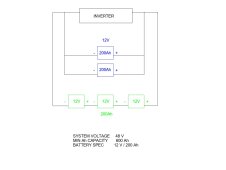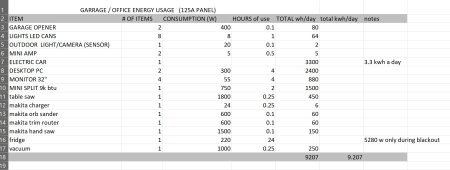i have installed 4.4kw DIY grid tied system that currently, that feeds both my house, office and garage areas. since i have separate sub panel in the garage that serves garage and office, i started playing with idea of adding off grid system for gargage and office. i just started researching this so bear with me.
my idea is to add new solar array, off grid inverter and batteries. then turn existing garage panel into critical loads panel. to do this, i want to disconnect wires that feed this garage panel (the feed comes from main house panel where my grid tied system connects) and use them as AC IN in to connect to off- grid inverter. then use inverters AC OUT and feed into my newly created critical loads panel.
by doing so, i assume that my inverter will switch to grid power anytime i am not producing enough and at the same time there is not enough power in my batteries. and switch back to battery/solar panel use, once there is enough power available. is this assumption correct?
now would this be considered off-grid or grid-tie, since i will still be drawing from the gid? will the inverter also feed to the grid? i dont really want to feed the grid with this system as i dont want to deal with excell on this one.
i have other items i wanted to discuss regarding batteries, but just wanted to make sure that what i am planing makes sense.
my idea is to add new solar array, off grid inverter and batteries. then turn existing garage panel into critical loads panel. to do this, i want to disconnect wires that feed this garage panel (the feed comes from main house panel where my grid tied system connects) and use them as AC IN in to connect to off- grid inverter. then use inverters AC OUT and feed into my newly created critical loads panel.
by doing so, i assume that my inverter will switch to grid power anytime i am not producing enough and at the same time there is not enough power in my batteries. and switch back to battery/solar panel use, once there is enough power available. is this assumption correct?
now would this be considered off-grid or grid-tie, since i will still be drawing from the gid? will the inverter also feed to the grid? i dont really want to feed the grid with this system as i dont want to deal with excell on this one.
i have other items i wanted to discuss regarding batteries, but just wanted to make sure that what i am planing makes sense.










